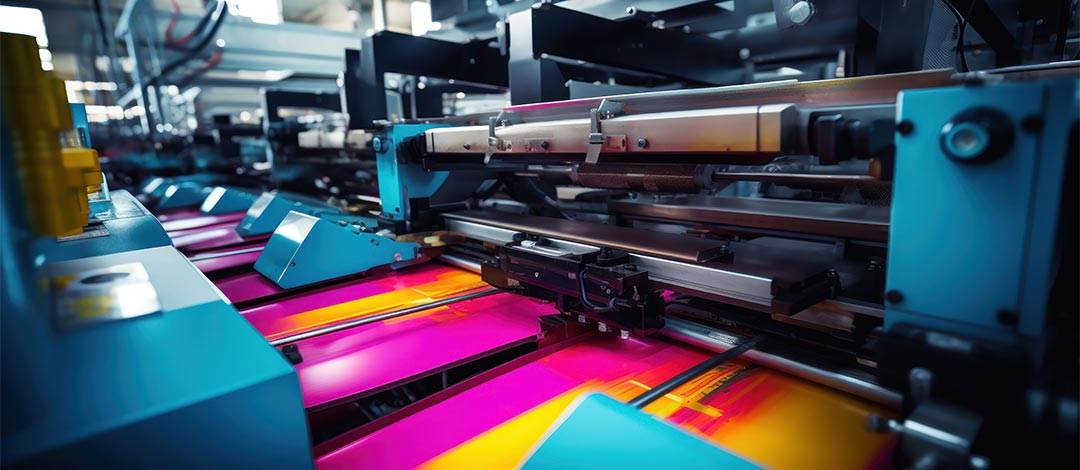In the world of educational publishing, choosing the right printing method is crucial. One of the most reliable and widely used techniques is offset printing. This method is especially beneficial for producing high-quality educational materials. Understanding the nuances of offset printing for educational publishing can significantly impact the quality and effectiveness of educational content.

What is Offset Printing?
Offset printing is a popular printing technique where the inked image is transferred from a plate to a rubber blanket, and then to the printing surface. This method is known for its superior image quality and cost-effectiveness, especially in large print runs. It is extensively used in various industries, including educational publishing.
Importance of Offset Printing in Educational Publishing
In educational publishing, the quality of printed material is paramount. Offset printing ensures that textbooks, workbooks, and other educational resources are printed with clarity and precision. This printing method supports a wide range of paper types and sizes, making it versatile for different educational needs.
Advantages of Offset Printing
- High-Quality Prints: Produces sharp and clean images ideal for detailed educational content.
- Cost-Effectiveness: Economical for large volume printing, which is common in educational publishing.
- Versatility: Supports a variety of paper types and printing surfaces.
Offset Printing Process
The offset printing process involves several steps that ensure high-quality output. These include creating a printing plate, transferring the image to a rubber blanket, and finally printing on the paper. This method allows for consistent and accurate reproduction of educational materials.
Pre-Press Preparation
Before printing, a pre-press process prepares the materials. This step involves creating the plates and ensuring the content is ready for production. Proper pre-press preparation is essential for achieving the best results in educational publishing.
Choosing the Right Materials
Selecting the appropriate paper and ink is vital for offset printing. Different educational materials require specific types of paper and ink to enhance durability and readability. The choice of materials can influence the overall quality and effectiveness of the educational content.
Paper Selection
Educational materials often require high-quality paper to ensure longevity and readability. Offset printing supports various paper weights and finishes, allowing publishers to choose the best options for their needs.
Ink Types
The type of ink used in offset printing can affect the appearance and durability of educational materials. Choosing the right ink ensures vibrant colors and long-lasting prints.
Offset Printing vs. Digital Printing
While both offset and digital printing have their advantages, offset printing is generally preferred for educational publishing due to its cost-effectiveness and high-quality output for large print runs. For a detailed comparison, refer to this external resource.
Offset Printing for Different Educational Materials
Textbooks
Offset printing is ideal for textbooks due to its ability to produce high-quality, durable prints that can withstand frequent use.
Workbooks
Workbooks often require clear and precise printing, which is effectively achieved through offset printing techniques.
Supplemental Materials
Supplemental educational materials, such as charts and guides, benefit from the high-quality prints produced by offset printing, making them more engaging and useful for students.
Environmental Considerations
Modern offset printing has become more environmentally friendly, with options for recycled paper and eco-friendly inks. This makes it a sustainable choice for educational publishing.
Sustainable Practices
Many printing companies now offer sustainable practices, such as using recycled paper and non-toxic inks, which align with the environmental goals of educational institutions.
Cost Considerations
While the initial setup cost for offset printing can be higher than digital printing, the overall cost per unit decreases significantly with larger print runs, making it a cost-effective choice for educational publishers.
Long-Term Savings
For large volume projects, like printing textbooks, offset printing offers substantial savings over time, despite the initial setup costs.
Future of Offset Printing in Education
The future of offset printing in educational publishing looks promising, with advancements in technology making the process even more efficient and environmentally friendly.
Technological Advancements
Continuous improvements in printing technology are enhancing the efficiency and quality of offset printing, ensuring its continued relevance in the educational sector.
Conclusion
Offset printing for educational publishing remains a vital method for producing high-quality educational materials. Its ability to deliver cost-effective, durable, and engaging content makes it an indispensable tool for publishers. As technology advances, offset printing will continue to evolve, offering even more benefits to the educational publishing industry.

FAQs
Why is offset printing preferred for educational materials?
Offset printing is preferred for its high-quality output, cost-effectiveness for large print runs, and versatility in material selection.
What types of educational materials are best suited for offset printing?
Textbooks, workbooks, and supplemental materials like charts and guides are best suited for offset printing due to their need for high-quality and durable prints.
How does offset printing contribute to sustainability?
Offset printing contributes to sustainability through the use of recycled paper and eco-friendly inks, aligning with the environmental goals of educational institutions.
This article contains affiliate links. We may earn a commission at no extra cost to you.







